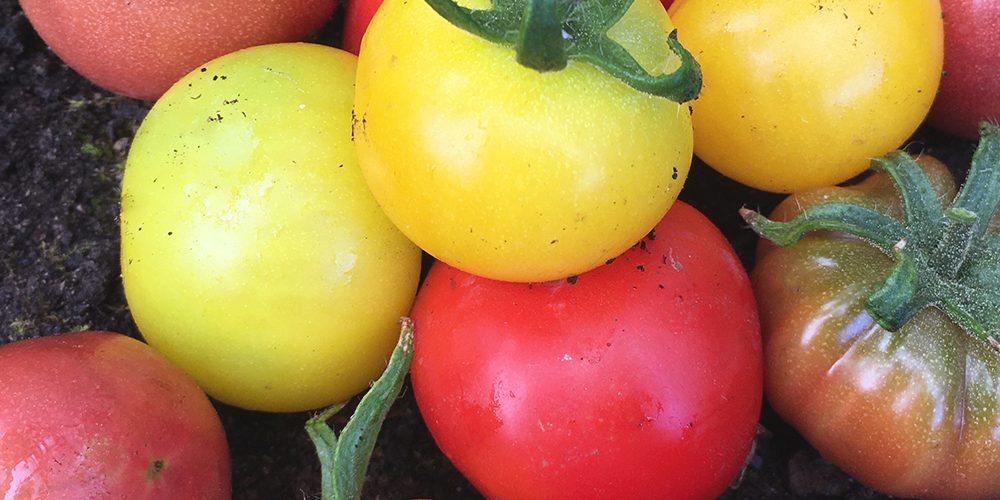- Harvest in late summer/autumn when the tomatoes start to ripen.
- If you have a glut, try making chutneys, or pasta sauces/soups to freeze, or drying them out in an oven at a low temperature for several hours.
How to grow... Tomatoes
Rocket Growing Guides

Growing your own tomatoes is vegetable gardening at its most rewarding. It’s just so satisfying to pick off a ripe, juicy tomato from its vine and pop it straight into your mouth. You know it’s going to taste extra good simply because you grew it yourself and it doesn’t disappoint! Most of our Rocket Gardens tomato plants are likely to do better when grown in a greenhouse or conservatory, but they will also grow in a warm and sunny, sheltered spot in the garden.
- Tomato Growing Guide
How to Plant Tomatoes
- Best grown in a greenhouse or polytunnel. If growing outside, choose a sunny, sheltered spot that stays quite warm – up against a south-facing wall would be good – and be sure not to plant out until frost-risk is over.
- You can plant in raised beds or a traditional veg plot, and also in pots (20cm+) and growbags ( plants per growbag)
- Plant 40cm apart. Planting them deep will help them to build a stronger root system.
- They will do best with plenty of compost or well-rotted organic matter.
- Upright/cordon varieties will need a support, so push a 1.5m-2m tall bamboo cane in alongside them when planting. (all Rocket Gardens varieties, except Tiny Tim, are upright cordon varieties.)
How to Grow Tomatoes
- Best grown in a greenhouse or polytunnel. If growing outside, choose a sunny, sheltered spot that stays quite warm – up against a south-facing wall would be good – and be sure not to plant out until frost-risk is over.
- You can plant in raised beds or a traditional veg plot, and also in pots (20cm+) and growbags ( plants per growbag)
- Plant 40cm apart. Planting them deep will help them to build a stronger root system.
- They will do best with plenty of compost or well-rotted organic matter.
- Upright/cordon varieties will need a support, so push a 1.5m-2m tall bamboo cane in alongside them when planting. (all Rocket Gardens varieties, except Tiny Tim, are upright cordon varieties.)
Common Pests & Problems with Tomatoes
- Aphids & Greenfly – watch out for colonies of these tiny little bugs appearing. A sharp blast from the hose will wash them off, and it is worth putting something yellow and sticky (like a yellow bucket smeared in vaseline) to stop them from re-colonising. Try planting up marigolds and tagetes with your tomatoes too.
- No fruits appearing – this is likely to be either poor pollination (try planting some companion plants like marigolds to encourage bees, and make sure there are open windows to greenhouses) or too cool conditions – if growing outside you could try using a cloche or make a mini polytunnel for your peppers (bamboo stakes topped with upside down jars make a good support for a polythene or fleece cover.)
- Blight – this is more common on plants that are grown outdoors. If you see leaves turning brown/black, pick them off and destroy them as quickly as you can to prevent it from spreading to stems and fruits! If they are badly affected, you might need to admit defeat for the season!
- Blossom End Rot – if you notice the flower-end of the tomatoes turning black/rotten, this is Blossom End Rot. Try to water more frequently to ensure the plants can access the nutrients they need from the soil, and give plants a liquid feed every fortnight.
- Split/cracked fruit – this is another problem for plants that have been in conditions fluctuating from very dry and very wet – try to be more consistent in your watering and subsequent fruits should be better!








